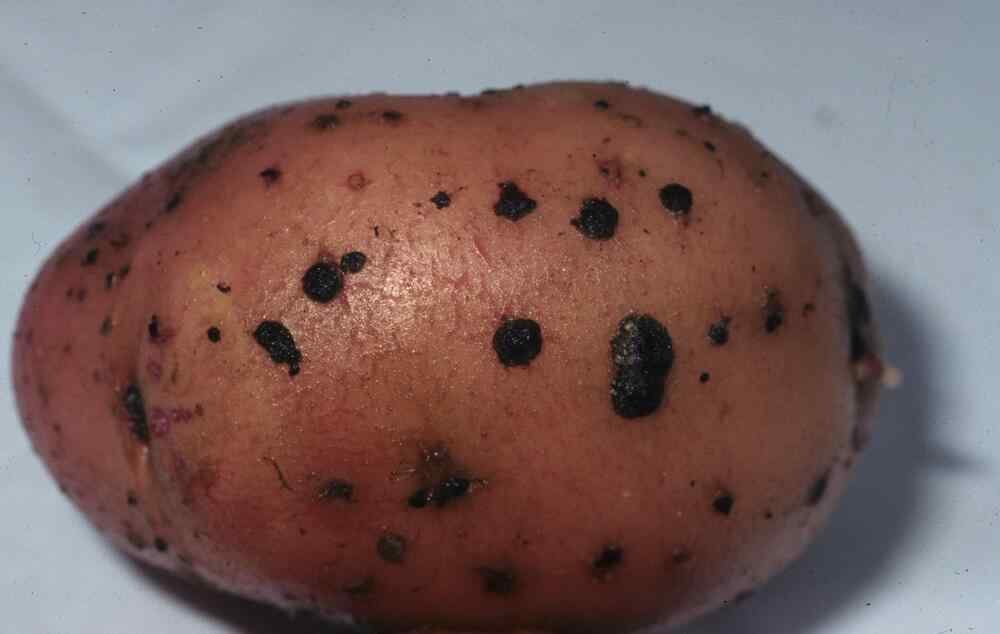You’re about to enjoy a delicious sweet potato when you notice small holes inside. Panic sets in – is it still safe to eat?
Holes in sweet potatoes are often caused by insects, improper storage, or damage during harvesting. If the holes are small and shallow, you can usually cut out the affected areas and safely eat the rest. However, if the holes are extensive or accompanied by signs of rotting, it’s best to discard the sweet potato.
So, what causes these pesky holes, and how can you prevent them? Let’s take a closer look at the culprits behind holey sweet potatoes.
What Causes Holes Inside Sweet Potatoes?
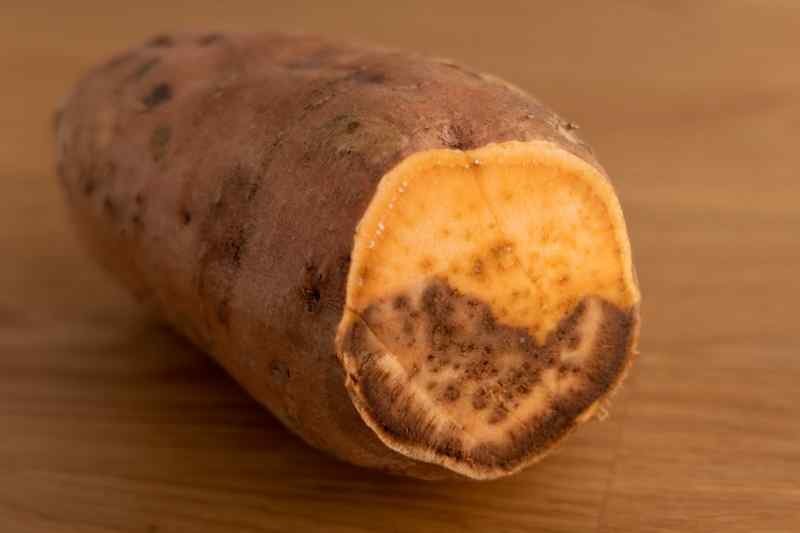
Discovering holes inside your sweet potatoes can be surprising, but the culprits are often pests such as wireworms or sweet potato weevils.
These insects deposit their eggs into the soil, and upon hatching, the larvae feast on the potato roots. As they mature, these larvae burrow through the tuber, creating tunnels or cavities. The severity of the damage depends on the type of pest and the size of its population.
It’s also crucial to recognize that physical harm can lead to holes as well. When a potato is subjected to impact or falls, it might develop a cavity or bruise. Thus, gentle handling and effective pest management strategies are essential to avoid such problems.
Are Sweet Potatoes With Holes Safe To Eat?
Often, you might question whether sweet potatoes with holes are okay to eat. This typically hinges on what caused the holes and how much damage there is. A brief check can often reveal if it’s alright to consume.
Here’s a straightforward guide:
| Condition | Safe to Eat? | Note |
|---|---|---|
| Small holes, no discoloration | Yes | Simply remove the hole. |
| Large holes, some discoloration | Maybe | Remove the affected area. |
| Extensive holes, unpleasant odor | No | Suggests decay or significant pest damage. |
Insect Pests That Cause Holes In Sweet Potatoes

Sweet potatoes are sometimes found with holes inside, which is usually the work of certain insects that target them during growth. These pests burrow into the sweet potatoes, creating tunnels and cavities as they feed.
- Sweet Potato Weevil: This pest is notorious for damaging sweet potatoes. It lays eggs inside the roots, and the larvae that hatch burrow into the flesh, causing holes. Proper insecticide application is necessary to manage this pest, as well as good storage and sanitation practices. More information on managing these weevils can be found at LSU AgCenter.
- Wireworms: They are the larvae of click beetles and are known for affecting various root crops, including sweet potatoes. Their activity leads to holes and tunnels within the sweet potatoes, which can render the crop unmarketable.
- Southern Potato Wireworm is a common type in the Southeastern United States, and control measures should target the larvae to prevent damage to the crops. Management practices are detailed on the Home & Garden Information Center page from Clemson University.
- Flea Beetles: Tiny but destructive, flea beetles leave small, round holes on foliage and can also affect the tubers. A variety of control methods, such as botanical insecticides, can help manage flea beetles.
Effective pest management, including field monitoring and timely application of insecticides, is critical to preventing these pests from damaging sweet potatoes. The NC State Extension Publications offers a comprehensive guide on various sweet potato pests and their control.
How To Prevent Holes In Your Sweet Potatoes
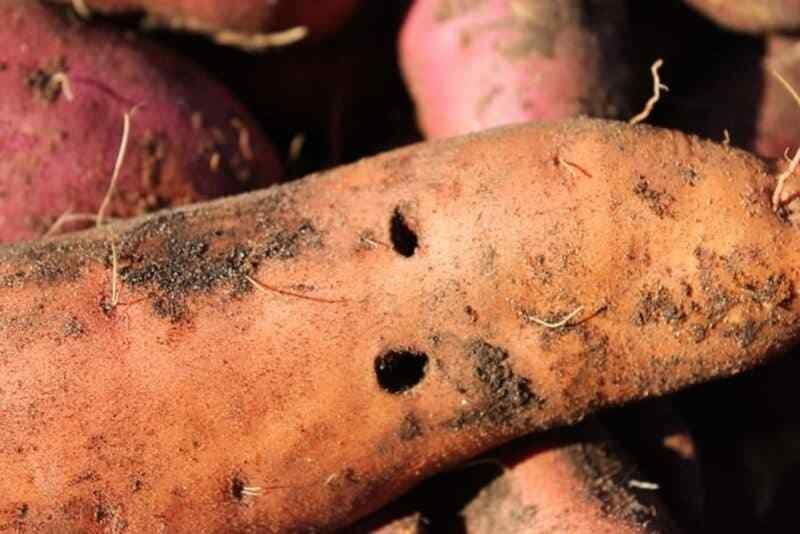
Achieving a bountiful harvest of sweet potatoes free from unsightly holes requires attention to a few key agricultural practices. Be diligent in your approach to pest management, particularly targeting the common culprits like wireworms.
Pre-Planting Strategies:
- Crop Rotation: Rotate your crops annually to reduce pest buildup, rotating sweet potatoes with non-root vegetables.
- Soil Preparation: Till the soil to disrupt the lifecycle of soil pests before you plant.
During Growing Season:
- Inspect Regularly: Check your sweet potatoes and surrounding soil for larvae and signs of infestation.
- Pest Control: Employ appropriate measures, such as beneficial nematodes that prey on wireworms.
Harvest and Storage:
- Timely Harvest: Harvest sweet potatoes as soon as they reach maturity to minimize exposure to pests.
- Proper Storage: Ensure sweet potatoes are stored in a cool, dry place to prevent decay, which can attract more pests.
Implement these measures to significantly reduce the chances of finding holes in your sweet potatoes.
For further guidance on identifying and combating wireworms, you might find this reference helpful: Holes in sweet potatoes are often related to wireworm damage, and addressing this issue early is key to prevention.
When to Discard Sweet Potatoes with Holes
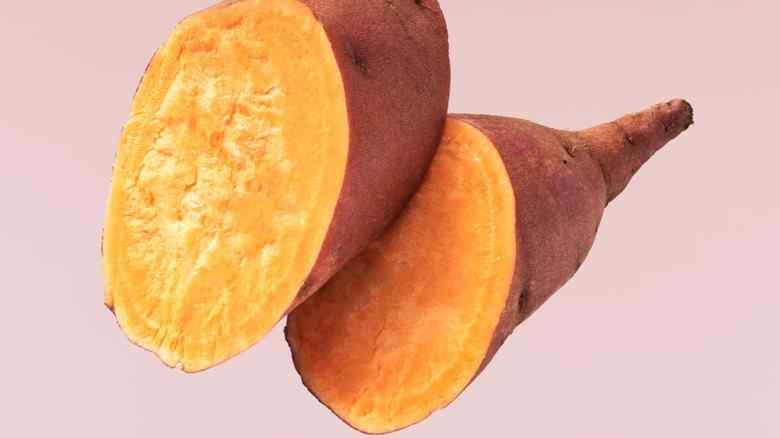
Determining when to throw away sweet potatoes with holes involves paying close attention to certain signs of decay and damage from pests.
If you notice the holes are circled by areas that are dark or soft, this indicates the sweet potato has started to rot and shouldn’t be eaten.
A bad smell coming from the holes also signals the presence of bacteria or fungi, which means the sweet potato should be discarded without delay.
Moreover, if there’s significant tunneling inside the sweet potato, causing it to feel spongy or very hollow, this is a clear indication of serious infestation by pests.
In such situations, it’s crucial to get rid of the sweet potato to avoid the risk of pests or diseases affecting other foods.
It’s essential to examine sweet potatoes thoroughly, making safety and quality the main factors in deciding whether to keep or dispose of them.
Can Sweet Potato Vines Cause Holes In The Tubers?
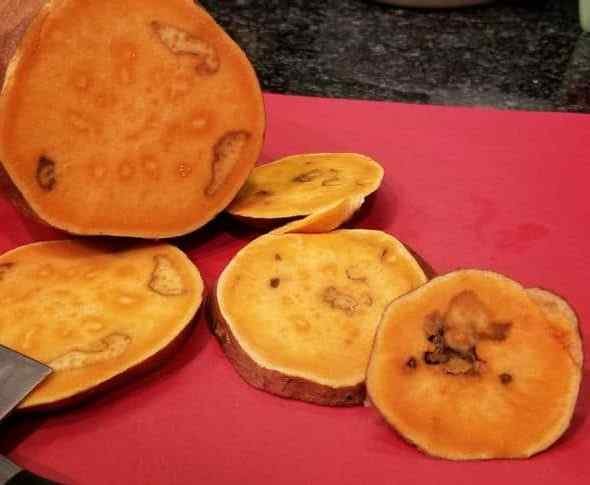
Sweet potato tubers are susceptible to various diseases and pests that can cause holes or damage.
However, the vines themselves are not typically responsible for creating holes in the tubers. Instead, holes inside sweet potatoes are generally the result of pest infestations or disease.
- Pests: Certain types of insects, such as sweet potato weevils and wireworms, are known to bore into sweet potatoes creating tunnels and holes. The sweet potato weevil, in particular, is a significant pest that feeds on the vines but lays eggs in the tubers. The emerging larvae then tunnel into the flesh, leaving behind holes.
- Disease: Diseases like black rot or internal cork can also create voids or give the appearance of holes in sweet potatoes. These conditions are caused by fungi that enter through the roots and affect the tubers internally, leading to decay and cavities within.
- Cultural Practices: Proper agricultural practices are key in preventing such issues. Ensuring your soil is free from pests before planting and rotating crops can reduce the likelihood of pest infestation.
To maintain healthy sweet potato crops, pests and diseases must be managed. MorningChores offers comprehensive advice on common sweet potato pests and problems.

